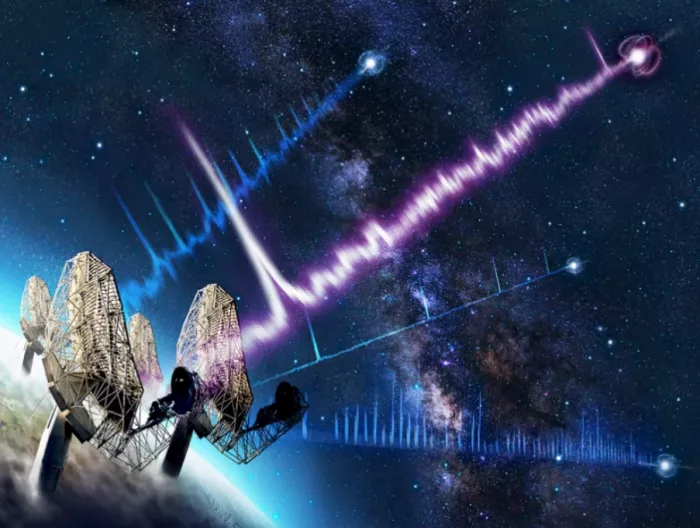According to new atlas, astronomers have discovered a strange neutron star, which challenges researchers' understanding of neutron stars, but may help to uncover the mystery of rapid radio bursts (FRB) This object rotates much slower than any other known neutron star and emits seven different types of radio pulses

Neutron stars are dense cores left by massive stars after supernova explosions. Some of them are known to throw radiation beams from their poles. If these beams of light happen to pass through the earth, they will appear in front of us in the form of short, regular radio pulses, making them known as "pulsars".
Most pulsars rotate very fast, ranging from a few milliseconds to a few seconds. Previously, the slowest pulsars required 23.5 seconds for each rotation. However, the newly discovered pulsar takes 75.88 seconds to rotate at a snail's speed, making it the slowest neutron star ever discovered to emit radio.
For a long time, it has been believed that the radio radiation produced by neutron stars is the direct result of their rapid rotation. With the passage of time, their speed slows down and these radiation is expected to stop. However, the new pulsar rotates for more than one minute at a time, posing a challenge to the model of this process. The research team admitted that they were not sure how its radiation was generated.
What is more strange is that the research team found that the object sent out seven different types of pulses. "Normal" pulses rise to a peak in brightness and then fade, while some pulses have two or three peaks before they fade. There are also some pulses that fluctuate greatly in brightness. This means that the object has a strange mixture of pulsars, ultra long period magnetars and fast radio bursts, which may eventually lead to an answer to the relationship between them.
The pulsar, named PSR j0901-4046, was first discovered by astronomers using the meerkat radio telescope in South Africa. At that time, one of its pulses appeared in a picture. Since then, its existence as a radio emitting neutron star has been confirmed by multiple pulses captured in a series of 8-second images. Its slow pulse is the reason why it may "avoid" detection for a long time, and it indicates that there may be many such neutron stars.
Dr Manisha Caleb, corresponding author of the study, said: "Surprisingly, we only detected radio emissions in 0.5% of the rotation period of this source. Therefore, there are likely to be many such very slow rotating stars in the Milky way, which is of great significance for understanding the birth and age of neutron stars. Most pulsar surveys do not search for such a long period, so we do not know how many such stars may exist."
The study was published in Nature astronomy 》In magazines.